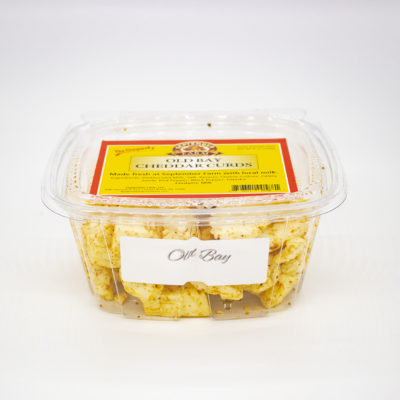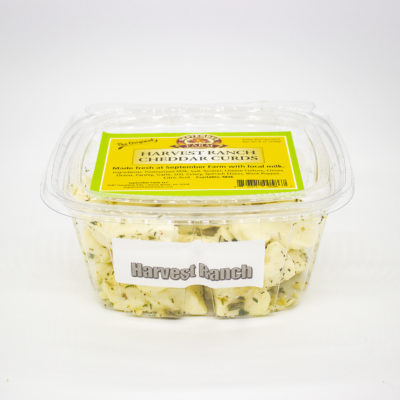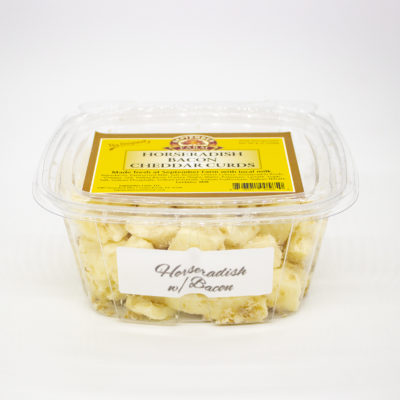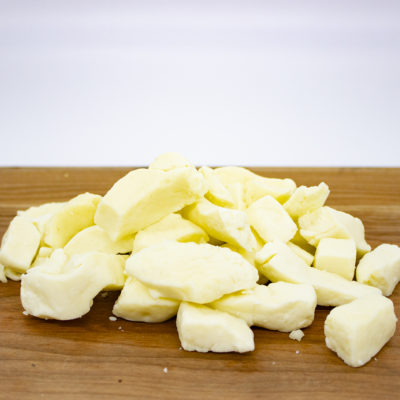Cheese Curds
What Are Cheese Curds?
Have you found yourself asking the deep question, “What are cheese curds”? If you’re not from the Midwest and don’t proudly dub yourself a “cheesehead,” the name “cheese curds” might not mean much to you. Maybe you’ve seen packages of little white blobs with this name at the grocery store and considered buying them, but you found yourself too afraid of being disappointed to go out on a limb and try them. Or maybe you consider yourself the world’s biggest cheese curd fan, but you really can’t honestly claim that title because you don’t know exactly what you’re eating or where these little cloud-looking pieces of cheese come from. Find the answers to your questions, “What are cheese curds?” and “What are cheese curds made of?” in this post!
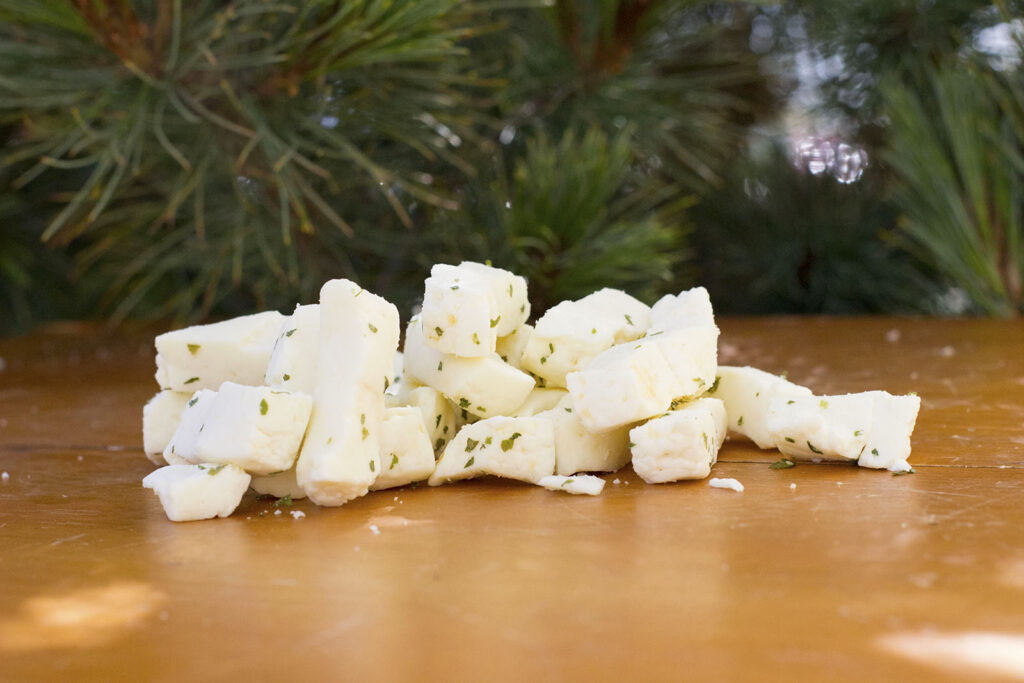
Cheese curds are essentially cheddar cheese when it’s still a baby. Most cheese requires aging before it’s considered ready to enjoy, but not cheese curds. These little bits of cheese are best eaten fresh –some would even say they’re most delicious when eaten warm and straight out of the cheesemaker’s vat. Rather than being put into presses to form those big, beautiful cheese wheels, cheese curds are cut up and bagged directly after being separated from the whey.
In this video, Jake from September Farm gives us a quick overview of what a cheese curd actually is!
Where do Cheese Curds Come From?
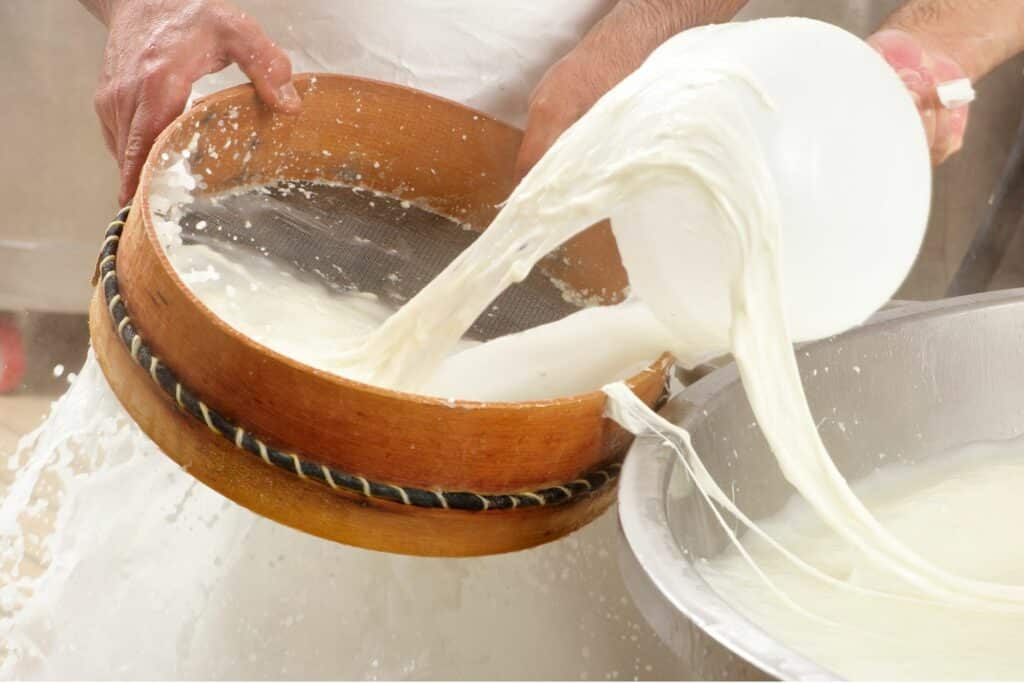
Cheese curds weren’t something that was supposed to happen. A long, long time ago, when cheese was solely made by hand, cheesemakers would take the leftover bits of cheese home as a special surprise for their families. Since they worked so well as a special treat, cheesemakers decided to try selling this new type of cheese. This decision was quite a wise business strategy because now, especially in the Midwest, “cheese curds” have become a staple dairy product.
What Are Cheese Curds Made Of?
Wondering “What are cheese curds made of”? The ingredients used to make cheese curds are relatively simple, as is the case with most cheese.
1. Milk

The most essential ingredient is obviously high-quality milk. Here at September Farm, we use pasteurized milk straight from the dairy cows on the farm around our retail store and processing facility. The cows you see when you visit our store are the cows that are to thank for our cheese curds.

Before producing cheese, we never separate the fat from our milk, making our cheeses as rich and creamy as possible. The fresh milk goes directly from the cow to the cheese vat, where the magic that is the cheese-making process happens.
2. Salt
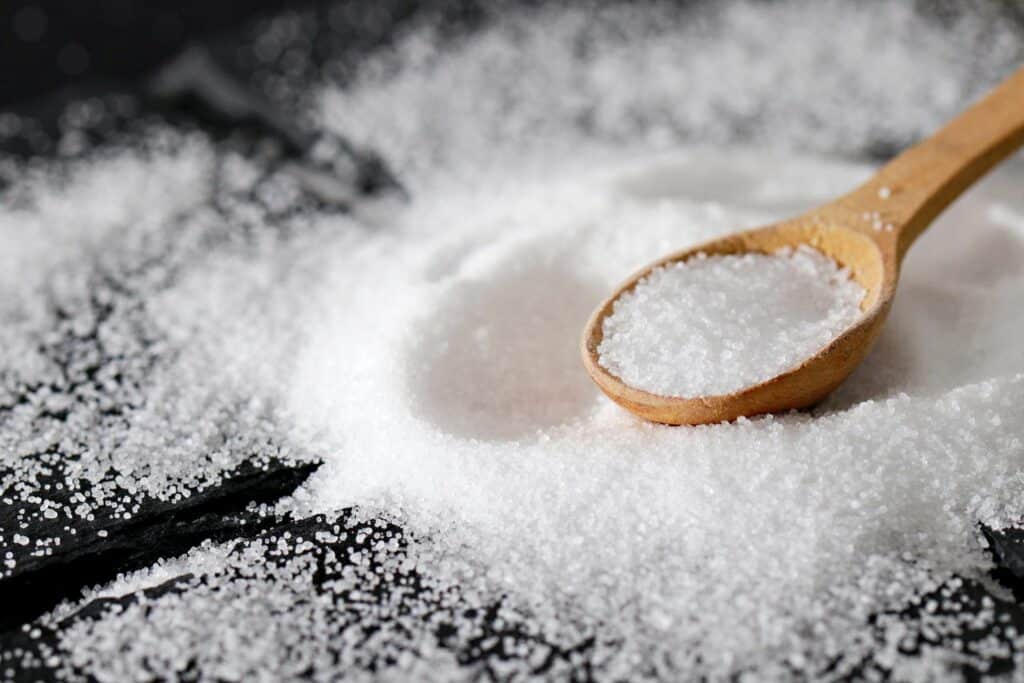
Though it may seem like an ingredient of low importance, salt serves several vital purposes in our cheese curds. The non-iodized, semi-coarse salt we use in our curds helps draw out excess whey, giving the curds a distinct texture. Salt also neutralizes the acidity in cheese and acts as a natural preservative so your curds last longer. Most importantly, salt enhances the flavor of our cheese curds and brings out the other ingredients in the curds.
3. Microbial Rennet

Microbial rennet is a coagulating agent that we use to thicken the milk during the process of making cheese. Rennet is added before we cut the cheese into curds, which causes the cheese to come together and the whey to be separated from it.
4. Cheese Culture

Cheese cultures are added to cheese to absorb the lactose sugars in the milk and transform it into lactic acid. This transformation caused by cheese cultures creates the separation of whey and cheese curds.
The original plain cheese curds don’t have complicated ingredients. These four ingredients combine to form those delectable little snacks that make “cheeseheads” out of people. While the ingredients are of paramount importance, the order in which you add those ingredients to the cheese vat and the procedure for doing so is equally key to great cheese.
How are Cheese Curds Made?

Even though you can devour a heap of cheese curds in a short amount of time, it took quite the process to get that pile in front of you. It takes a lot of time and delicate steps to properly form those small lumps of cheese you enjoy.
1. Milk Preparation
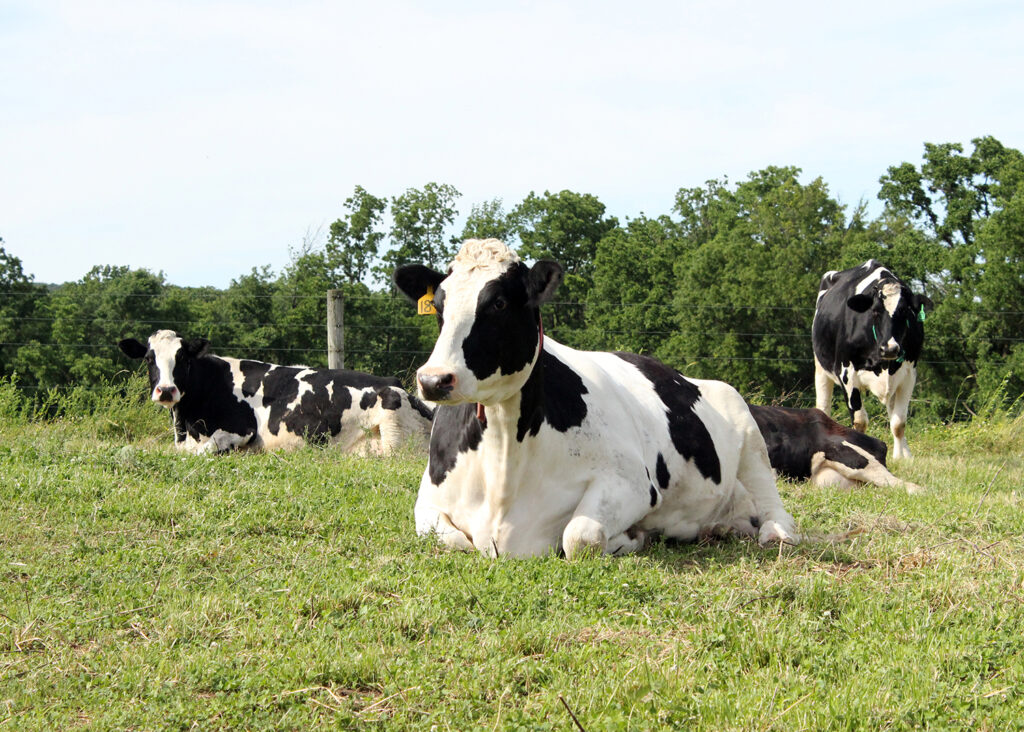
The first step is preparing the milk. Milk from our dairy is always pasteurized before it can be used to make cheese. When the pasteurized milk is ready, it’s put into a cheese-making vat, where the first thing to do is bring the temperature up to ninety degrees. When that temperature is reached, cheese culture is added as the first ingredient. The cheese culture does its job, turning those lactose sugars into lactic acid to start the cheese curd process.
2. Adding Ingredients
Rennet is the next ingredient that is introduced to the vat. Once added, this enzyme causes coagulation in the milk. This is the most exciting part of the cheese-making process. Within twenty minutes, the cheese has started to separate from the whey and is set up like your grandma’s custard.
3. Cutting the Curd
Now that the cheese has formed, it’s time to cut the curd. Specially designed curd knives are used to cut up the cheese in the vat. Curd knives are sets of wires running horizontally and vertically used to cut up the entire vat of cheese from top to bottom. After the cutting, the curds are left in quarter-inch cubes that are very soft and fragile.
4. The Cooking Process

The curd is all in quarter-inch squares, which means the cooking process is ready to start. As the curds cook, they continue releasing whey and firming up. To cook the curd, the temperature in the vat needs to go from ninety degrees to 102 degrees; however, this temperature raising must be done slowly and carefully. The temperature is only allowed to rise two degrees every five minutes, which makes this a slow and delicate part of the curd-making process.
Once the curd is appropriately cooked, six hundred pounds of cheese are left from the six thousand pounds of milk we started with. The fully cooked curds are pushed to the back of the cheese vat, and the whey is drained off. With the whey drained, the curds start knitting themselves together at the bottom of the vat.
Fun Fact: That whey doesn’t go to waste! Eventually, the drained whey is spread on neighboring farm fields as an excellent fertilizer.
5. Cheddaring

A big knife is used to cut the big hunk of curd into smaller (but still pretty huge) slabs of cheese. These slabs are turned and stacked every quarter of an hour as they release whey and firm up. When this process, called cheddaring, is completed, the time to cut the curd has arrived.
The stacking and turning of the cheese slabs cause more whey to be expelled from the cheese, and the more whey that’s gotten rid of, the firmer the cheese will be in the end. The cheddaring process gives the cheese a distinct dense texture.
6. The Final Step

The final step in the curd-making process is feeding the cheddared slabs through a curd mill. The curd mill cuts the slabs into finger-sized bits called cheese curds! The finishing touch is salting the curds, and then they’re ready to be packaged for sale or eaten immediately.
What Are Cheese Curds’ Health Benefits?
While cheese curds aren’t exactly considered a health food, they’re an excellent option for a calcium-rich snack. Being made with farm-fresh milk sets these curds apart from other processed cheeses.
How Can I Eat Cheese Curds?

While cheese curds are good enough to eat all by themselves by the bag-full, there are other tasty ways to fix them. Try battering and deep frying our cheese curds for something like a mini mozzarella stick– but better.

Canadians are loyal to cheese curds because they are a vital part of the unofficial national dish of Canada– poutine. Basic poutine consists of french fries and cheese curds smothered in brown gravy. Variations of poutine abound, but fresh cheese curds are the constant ingredient that is always a part of this dish.
What Are Cheese Curds?

The whole point of cheese curds is the fact that they are fresh and never aged. This is what sets them apart from regular cheddar cheese. The iconic squeak that eating cheese curd produces is a sign that the curd is fresh and in prime condition for eating.
Cheese curds should be enjoyed as soon as possible, and we don’t think that will be much of a problem considering how amazing they taste. However, if, for some reason, you have some forgotten cheese curds left in the refrigerator, don’t despair! As long as they still taste great, they’re perfectly fine if they’re not fresh. Slightly aged cheese curds won’t have that squeak when you take a bite, but they can still be used in salads, sandwiches, or your morning eggs.
Shelf Life of Cheese Curds

The fact that cheese curds have a short shelf-life is what makes them unique among other cheeses. Don’t be fooled by cheesemakers who simply break up aged cheddar cheese and call it cheese curds. Cheese curds aren’t made to last a long time. They’re made to be eaten fresh because that’s when they’re best.
Ready To Get Your Own Cheese Curds Delivered To Your Door?
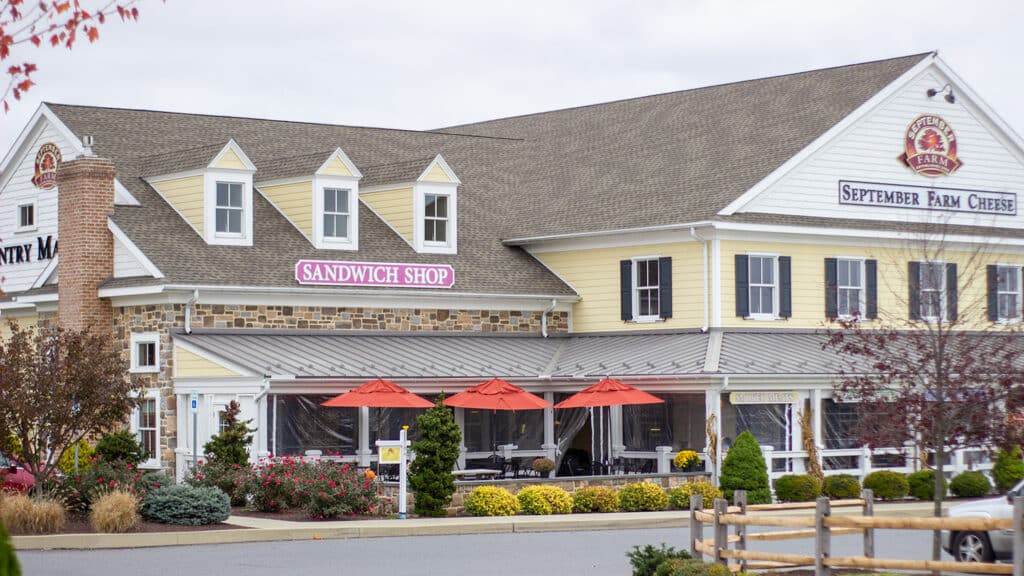
Now that you know the answer to your questions, “What are cheese curds?” and “What are cheese curds made of?” and more, it’s time to try some delicious fresh cheese curds! At September Farm we make and sell our cheese curds online and ship all over the lower 48 states! If you are fortunate enough to live near us in Honeybrook, PA we would love to have you stop by and visit our physical retail location. Otherwise, here are some of the varieties of cheese curds that we can ship directly to you.




